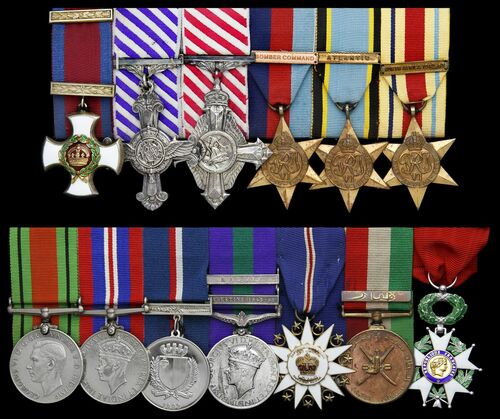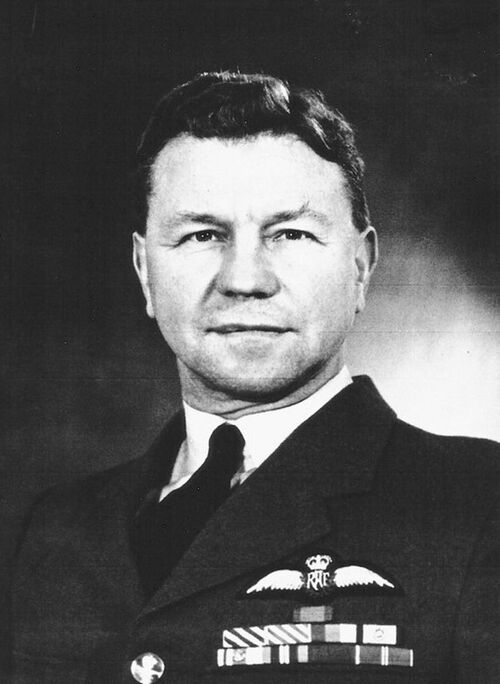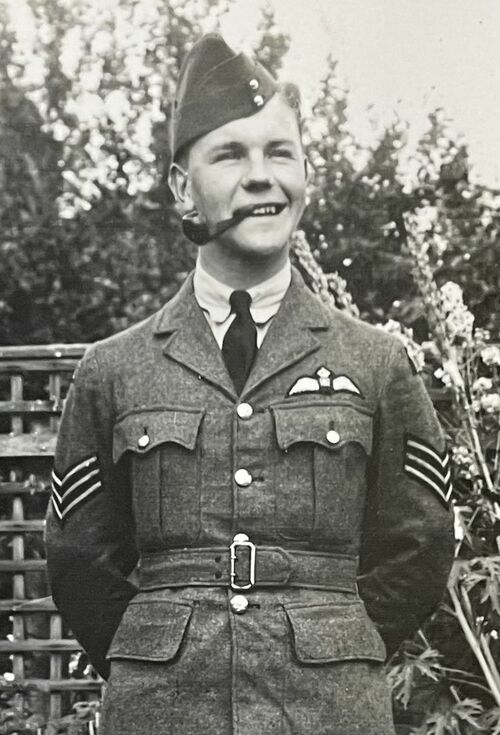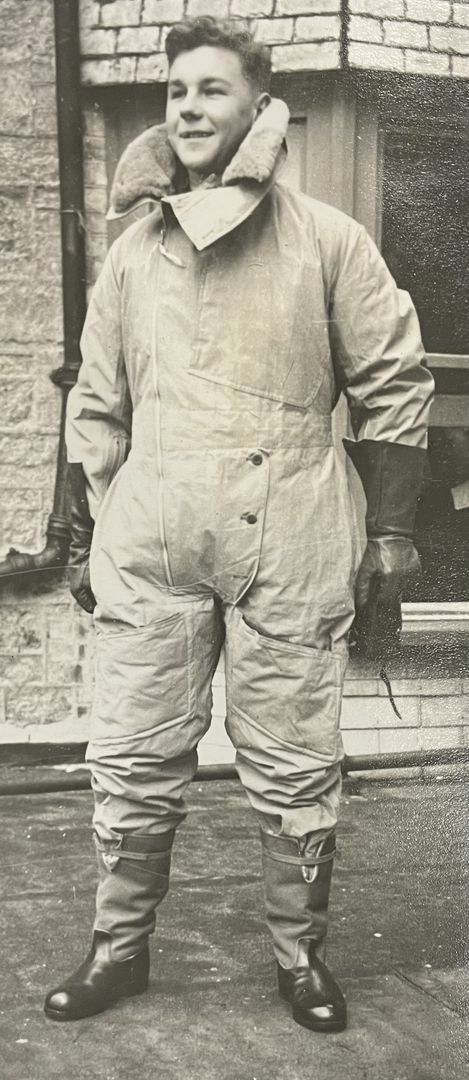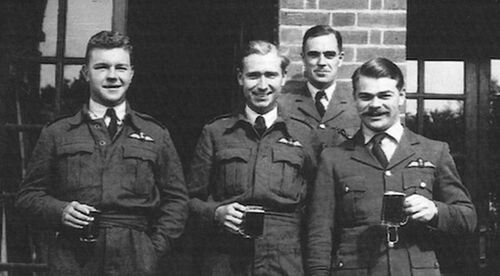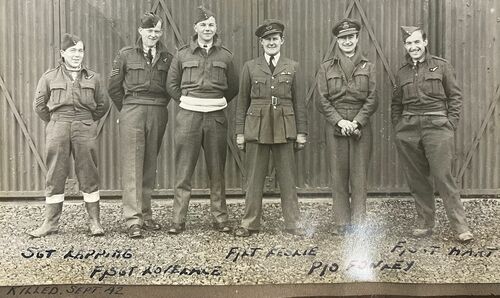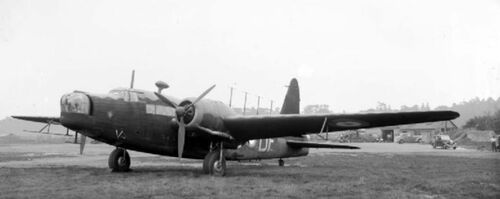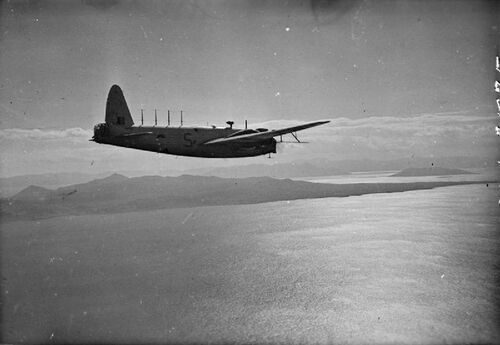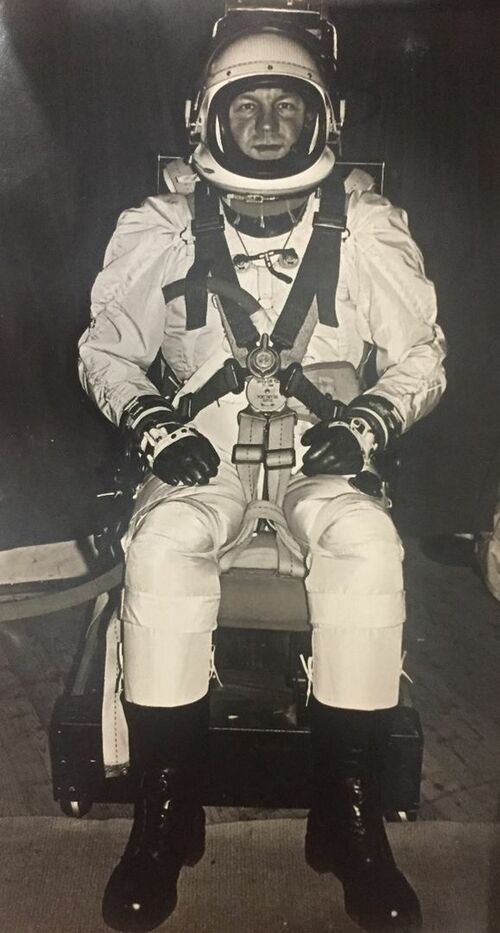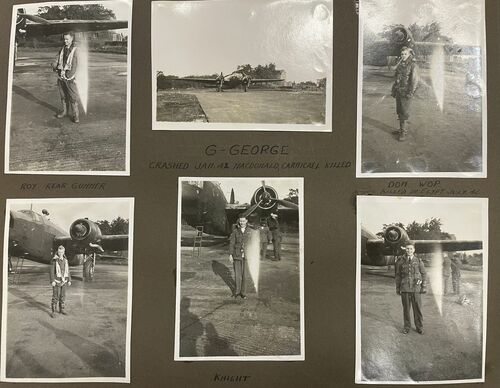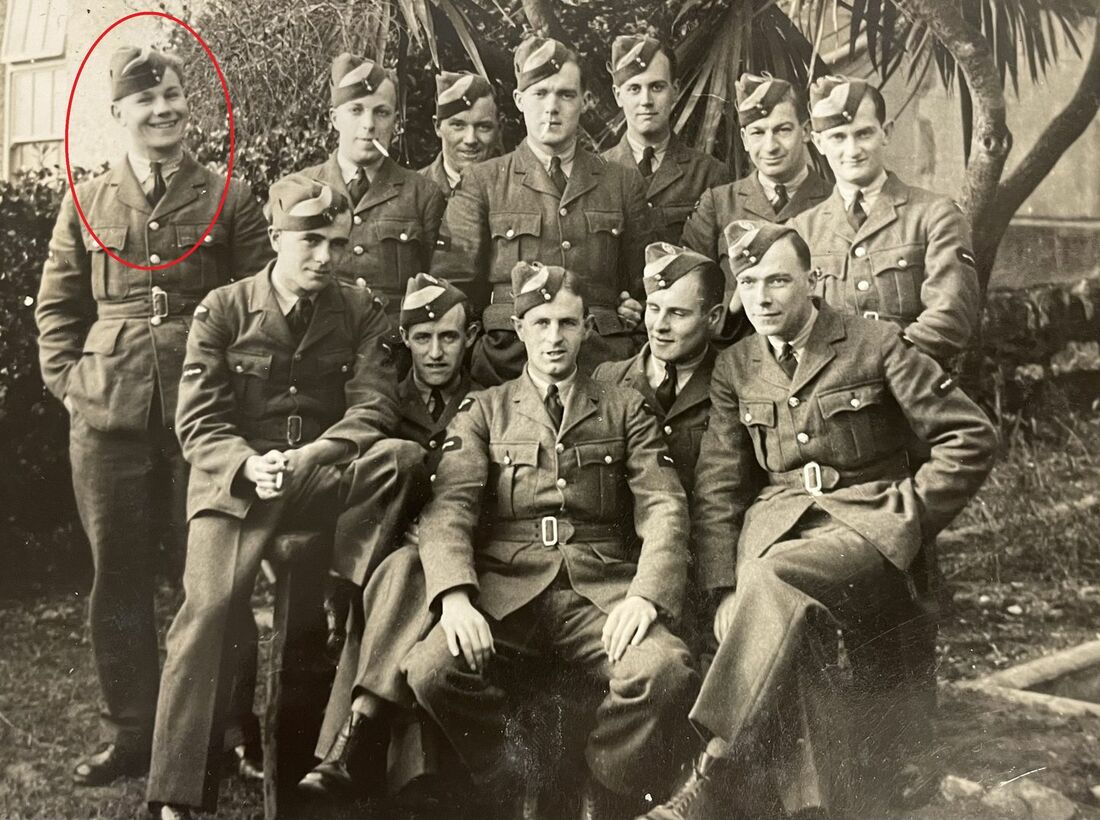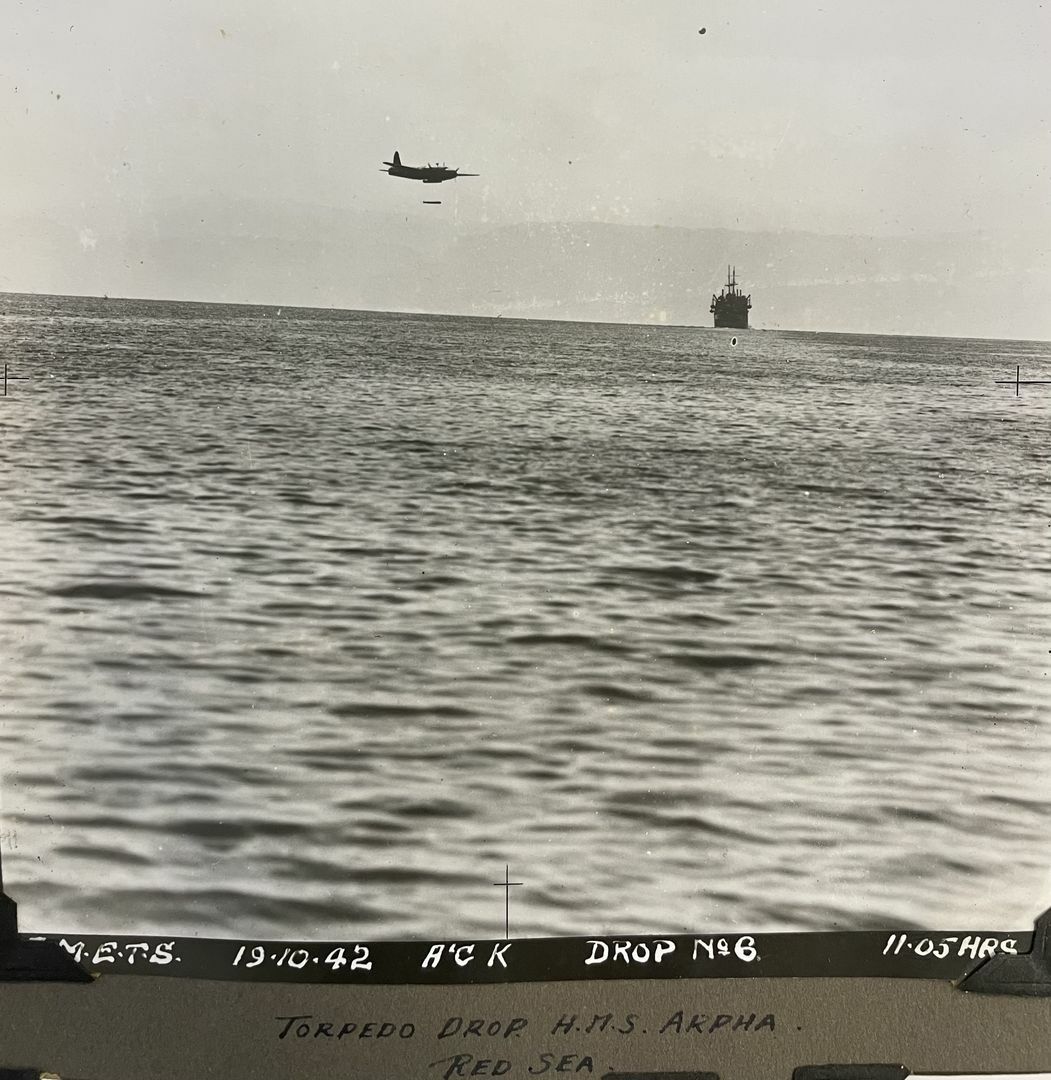Auction: 24001 - Orders, Decorations and Medals
Lot: 216
Sold by Order of a Direct Descendant
A rare and outstanding Second World War Coastal Command D.S.O., D.F.C., post-war test pilot's A.F.C. group of thirteen awarded to Wing Commander H. 'Jimmie' Cobb, Royal Air Force
Already a veteran of an operational tour, he piloted specially modified 'stickleback' Wellingtons of No. 524 Squadron in shadowing operations and anti-shipping strikes off the French, Dutch and Norwegian coasts in the lead-up to, and beyond D-Day, often pressing home his attacks in the face of heavy opposition
His success rate in countering E- and R- Boat operations was particularly noteworthy, and his name became a byword for resolute calm, fearlessness and exceptional airmanship
Distinguished Service Order, G.VI.R., the reverse officially dated '1945', with its box of issue, top riband bar adapted for mounting; Distinguished Flying Cross, G.VI.R., the reverse officially dated '1944', with its box of issue; Air Force Cross, E.II.R., the reverse officially dated '1956', with its box of issue; 1939-45 Star, clasp, Bomber Command, the clasp with its box of issue, this named to 'Wg Cdr H J Cobb 1190619'; Air Crew Europe Star, clasp, Atlantic; Africa Star, clasp, North Africa 1942-43; Defence and War Medals 1939-45; Malta Commemorative 1992; General Service 1918-62, 2 clasps, Palestine 1945-48, Malaya (Flt. Lt. H. J. Cobb. R.A.F.), second clasp loose upon riband; Malaysia, Federation, Order of the Defender of the Realm, breast Badge, silver-gilt and enamel, with its box of issue; Oman, Sultanate, Campaign Service Medal, 1 clasp, Dhofar; France, Republic, Legion of Honour, breast Badge, by Arthus Bertrand, Paris, in its box of issue, mounted court-style as worn in two separate groups, apart from this last, good very fine (13)
D.S.O. London Gazette 27 July 1945. The original recommendation states:
'Since being awarded the Distinguished Flying Cross in September 1944, Flight Lieutenant Cobb has carried out eight attacks on enemy shipping - and eleven sorties in all.
On 30 September, on patrol along the Dutch Convoy Route, he pressed his reconnaissance right into Wilhelmshaven anchorage and selecting his target, the biggest merchant vessel, carried out an excellent attack. Concentrated light and heavy flak was met from ships and shore defences, but the stick of bombs fell across the stern of their target, scoring a direct hit with the second bomb. A shower of burning debris was sent up, and as the aircraft left the scene, the stern of the vessel was seen to be on fire.
On 29 November, Flight Lieutenant Cobb was on patrol off the Norwegian coast, and a merchant vessel was located just off Lister. While investigating the radar contact, accurate light flak was experienced and the aircraft was hit twice in the fuselage, rendering the hydraulics unserviceable. Undaunted, this fearless Captain completed the investigation, identifying the type of target, and then carried out a good attack, through broken cloud.
On 23 January, he and his crew were sent off as strike aircraft to locate three E-Boats which were crossing the North Sea from Den Helder. These were sighted and attacked, their first stick of bombs falling amongst the sources of flak. Flight Lieutenant Cobb then came down and machine-gunned them, and thereafter continued to shadow the E-Boats for five hours. Our naval force was enabled to intercept the enemy, who then withdrew. When out of the S.V.A.R., a second good bombing attack was carried out, followed by further machine-gun attacks.
Four unidentified vessels were attacked off Texel on 16 March, and two nights later three E-Boats were located, attacked and shadowed, off Ijmuiden.
On 2 April, three R-Boats were located and attacked off Texel, and nine days later on the same patrol, Flight Lieutenant Cobb found five probable R-Boats coming out of Den Helder, and attacked them, against moderate flak.
On 19 April, when on armed reconnaissance, Flight Lieutenant Cobb and his crew found a convoy off Wilhelmshaven and bombed them. In bright moonlight, he then came down and machine-gunned the ships from close range. Their return fire was evaded by his excellent tactics and airmanship.
His last attack was on 23 April, when three M-class minesweepers were located off Ameland. The bombs were seen to score either a direct or very near miss on the centre vessel, followed by clouds of smoke coming from amidships. It was then seen to be stationary.
This Captain has flown in every sort of weather, handling his aircraft with consummate skill and calmness. On 25 March, notably, after nine hours flying in bad weather, he found weather conditions at base to be extremely bad, with visibility 800 yards with banks of haze at two to three hundred feet. With the utmost coolness and his usual faultless airmanship, he executed a perfect landing on his first attempt.
Flight Lieutenant Cobb's courage, flying skill and determination have earned him a great reputation in the Squadron. His name has come to imply a superlative performance, whatever the odds, and however bad the weather or the flak. He has set a great example and is strongly recommended for the award of the Distinguished Service Order.'
D.F.C. London Gazette 20 October 1944. The original recommendation states:
'This officer, now half-way through his second tour, has for the third time distinguished himself in an action against E-Boats, attacking them and shadowing them brilliantly.
Flying Officer Cobb's first tour was in Bomber Command, when he took part in raids on Dusseldorf, Mannheim and Aachen, in November - December 1941 and later, on moving to the Middle East, in nine raids on Tobruk. He was subsequently engaged in torpedo strikes and minelaying off the coast of Italy. He made three drops and on 31 March 1943, in the face of accurate and intense flak, scored a confirmed hit on an 8,000-ton M.V. escorted by two destroyers.
Flying Officer Cobb commenced his second tour in April 1944. For skilful and courageous shadowing of 10 E-Boats for four hours on 16 May he was congratulated by 19 Group. On 6 July, he again attacked nine E-Boats, scoring a near miss, and shadowed them for an hour. On the same patrol he reported four M.Vs and later saw them attacked. For this sortie, he was congratulated by 16 Group.
On 9 August, he illuminated E/R Boats for Beaufighters on Operation 'Purblind'. These were close inshore, and, hindered by low cloud, he made several runs across the mouth of Le Havre within half a mile of the Mole and eventually enabled the Beaufighters to attack.
On 11 August, Flying Officer Cobb was on a special operation, when at 800 feet his port engine failed completely. Height was lost to sea level. He succeeded in climbing on one engine and flew the aircraft 120 miles to make a successful belly landing at Thornaby.
On 17 August, Flying Officer Cobb capped these fine achievements by carrying out yet another attack on five E-Boats, one bomb falling between two of the formation. He continued to shadow for an hour, his frequent and accurate reports making it possible for our forces to engage the enemy. He then found and reported three more E-Boats, enabling another Wellington to attack.
Throughout all these operations, this Captain has combined qualities of exemplary courage, determination and flying skill. He has set a splendid example to other crews and maintained the highest tradition of the Royal Air Force.'
A.F.C. London Gazette 2 January 1956.
Henry James Cobb - always known as Jim or Jimmie - was born at Chelmsford on 31 May 1922 and was educated at Worthing High School, where he captained the Rugby XV and made the Football XI.
Opening shots
Joining the Royal Air Force in November 1940, he underwent pilot training and was posted to No. 458 Squadron, a Wellington unit, in September 1941. He subsequently participated in raids against Aachen, Düsseldorf and Mannheim, prior to the squadron's transfer to the Middle East in early 1942.
First of all, however, he was attached to No. 37 Squadron at Abu Sueir, from whence he flew several sorties against Tobruk in July-August 1942. Reunited with No. 458 Squadron at Shallufa, he next flew a furry of anti-submarine and mining operations in December, in addition to attacking Tripoli.
Then in January 1943, he transferred to No. 221 Squadron in Malta, in which capacity he flew a further dozen or so offensive sweeps to Sicily and Italy, attacking enemy shipping. In one of these, a Rover Patrol south of Capri on 13 March, he gained a torpedo hit on an 8,000-ton merchantman, amidst accurate and intense flak from two escorting enemy destroyers. Tour-expired, he returned to the U.K. via Gibraltar and was commissioned.
'Stickleback' Wellingtons
In April 1944, Cobb returned to the operational scene, when he was posted to No. 524 Squadron at Davidston Moor, Cornwall. Operating in 'Stickleback' Wellingtons - so named because of the multiple radar masts mounted atop the rear fuselage of the plane - the squadron was charged with hunting out, shadowing, and attacking enemy coastal shipping and, more particularly, German E- and R- Boats.
In that respect, as neatly outlined in the recommendations for Cobb's D.S.O. and D.F.C., he proved an exceptionally able and courageous pilot, pressing home his attacks in the face of heavy odds. Cobb's obituary notice in the Daily Telegraph adds:
'During the build up to D-Day in June, it was important to prevent U-boats entering the western end of the English Channel and to attack E-boats that could pose a significant threat to the Allied landings in Normandy. On May 16 Cobb spent four hours shadowing and attacking a force of E-boats. On July 6 he attacked another nine and continued shadowing them to provide reports for follow-on attacks.
With Allied forces well established in Normandy, the squadron moved to Norfolk. On August 9 Cobb illuminated a force of E-boats for Beaufighters. The boats were close inshore and, hindered by low cloud, Cobb had to make several runs across the mouth of the Seine at Le Havre to provide directions, enabling the Beaufighters to make a successful attack. Two nights later, one of the two engines of his Wellington failed while flying at low level, but he managed to gain just enough height to reach the coast and make a crash landing.
On August 17 he was operating off the Dutch coast when he made another attack, this time against five E-boats. He continued to shadow them for an hour and provide accurate reports for other forces to engage the enemy. He won an immediate D.F.C.
In September he carried out a successful attack on merchant shipping in the Wilhelmshaven anchorage. He encountered heavy anti-aircraft fire but dropped his bombs, leaving a large ship on fire … '
In fact, throughout the winter of 1944-45 and beyond, Cobb had further encounters of the hair-raising kind, flying into curtains of flak in some classic attacks off Texel, Den Helder and Ameland. By the end of April 1945, his second tour of operations amounted to 37 sorties, and he was recommended for the award of the D.S.O.:
'His name has come to imply a superlative performance, whatever the odds, and however bad the weather or the flak. He has set a great example.'
Post-war - test Pilot - A.F.C.
Cobb's obituary notice continues:
'After the war Cobb flew Liberator transport aircraft before converting to the Lancaster to fly maritime patrol sorties, first with Coastal Command and then with No. 38 Squadron in Malta as a flight commander for two years.
In 1952 he attended the Empire Test Pilots' School at Farnborough and at the end of the year-long course he remained there with the Armament and Guided Weapons Flight, when he flew the early jet fighters and bombers. For his work as a test pilot he was awarded the A.F.C.
During his time as a staff officer in Malaya in 1958 Cobb was involved in the formation of the Malayan Air Force.
He returned to the U.K. in October 1959 and spent the next six years as a test pilot, first with the R.A.F. Handling Squadron at Boscombe Down and then at Farnborough in the Department of Human Engineering, where he tested pressure suits and helmets for the V-Bombers and other high-flying aircraft.
He took voluntary retirement from the R.A.F. in December 1967 and moved to Aden as deputy of the embryonic South Arabian Air Force. This proved to be a difficult time for Cobb and his wife who, after a few months, found themselves confined to their house before they were able to leave.
In the early 1970s he served with the Sultan of Oman's Air Force. Later he learnt to fly helicopters and for a number of years worked as a crop-spraying pilot in the U.K., Africa and the U.S.
He retired to South Africa before moving to the Charente region of France.'
The Wing Commander died in March 2018, aged 95.
Sold together with the following original archive comprising:
(i)
His Flying Log Books, bound in leather.
(ii)
Framed and glazed Warrant for the D.S.O., Malaysian award and Empire Test Pilot's School.
(iii)
Handling School, RAF & Omani Squadron painted wall shields, together with Bomber Command Commemorative Medal.
For his miniature dress Medals, please see Lot 357.
Subject to 20% VAT on Buyer’s Premium. For more information please view Terms and Conditions for Buyers.
Estimate
£12,000 to £15,000
Starting price
£10000

